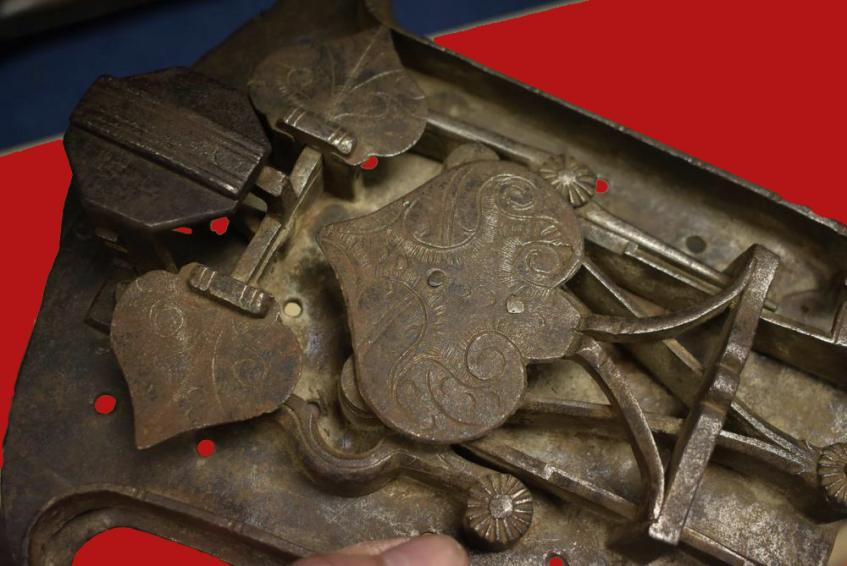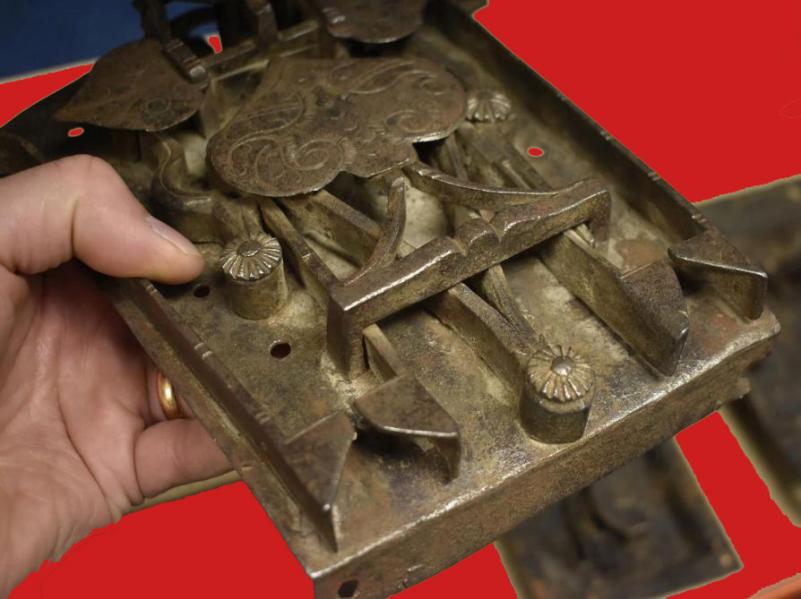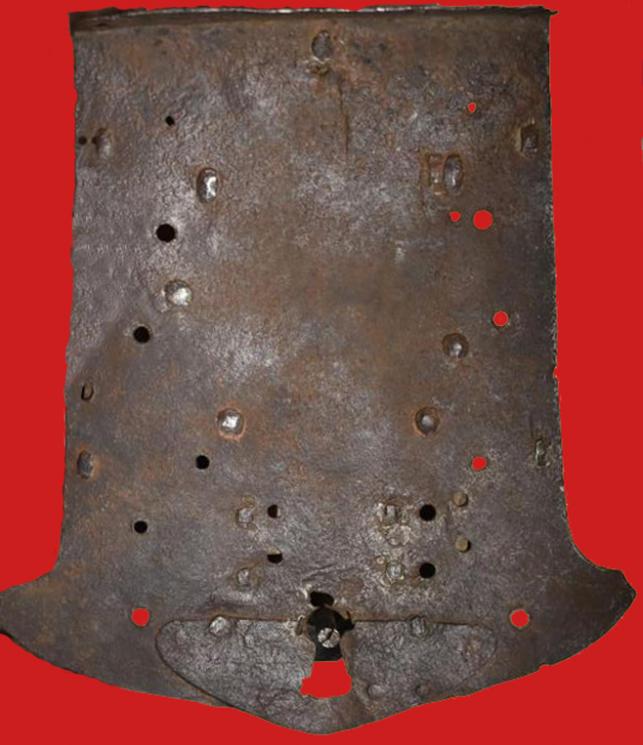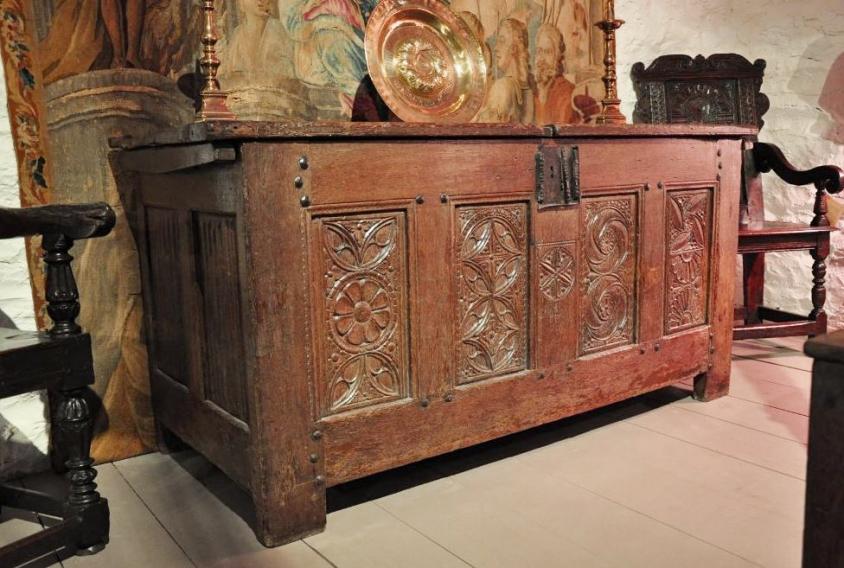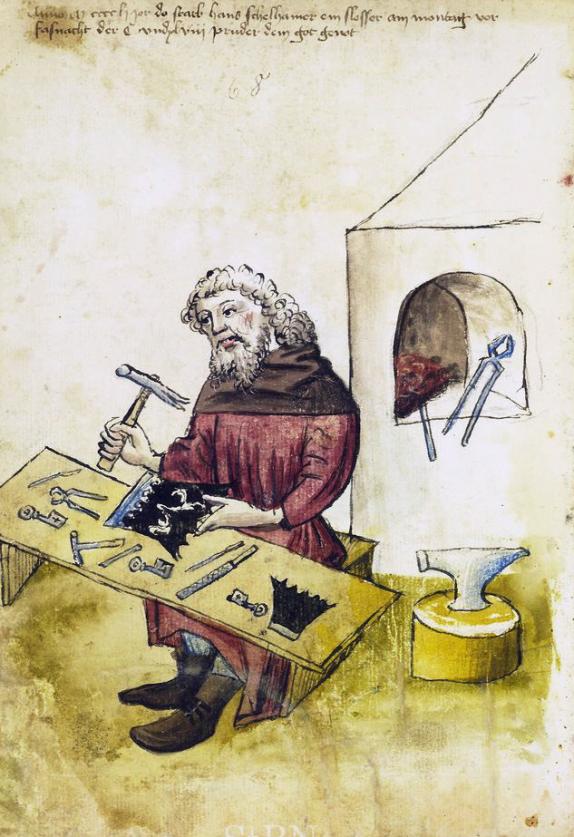A Beautiful & Fine Quality Early Post Medieval to Early 17th Century Renaissance Wrought Iron Chest or Door Lock, German
From a Norman or Gothic carved wooden chest. Superbly crafted and engraved. We show in the gallery the types of chest to which it could have been fitted in order to make them secure. The decoration of Gothic iron locks and keys was often elaborate and of the highest standard of workmanship. The motifs were frequently drawn from Gothic architecture, reproducing on a miniature scale complicated tracery patterns and even tiny statuettes. A number of these tiny locks were compound, with some of the mechanisms concealed from view, and required two or even three keys used in sequence to open them. It has been suggested that the greatly expanded use of locks on doors, or coffrets and other types of storage chests was a result of the increasing urbanization of life and the new emphasis on material wealth and private ownership which developed in the late Middle Ages. From the 15th century on, locksmiths gained a privileged status in society. They had advanced technical skills and were master craftsmen in decoration techniques. Their main clients were town burghers, the clergy, nobility who built castles and other large residences, and the Royal Family. Ever since the Viking era (the 9th to the 11th centuries), chests and small boxes have been important personal storage places in all levels of Swedish society – from the common people to the royal families. Locks made storage more secure. The Oseberg ship was discovered and excavated in the early 1900s in Vestfold, Norway. The ship was built in the first half of the 9th century. Many items were found on board – including storage chests. Chests were generally used by the crews of the Viking ships, who sat on them to row, as well as storing things in them.
In 1936, a Viking wooden tool chest was discovered during the plowing of a field at Mästermyr on Gotland. Over two hundred iron objects were found inside and around the chest, which is 90 cm long and 24 cm high. Of particular interest in the present context is the fact that these objects included blacksmith tools as well as two large keys, lock parts, other lock hardware and three small padlocks.
King Louis XVI of France proved to be a man of very few interests and pleasures in the midst of the whirlwind of entertainment that was Versailles. One was the hunt and the other was his amateur blacksmithing.
A small forge was installed above his private library to indulge the King in his pursuit of this particular hobby. Here there were two anvils and every tool that could possibly be needed was available. As it happened, locks were of a particular interest to Louis. The room was filled with all kinds of locks: common locks, hidden locks and elaborately gilded locks. The château's blacksmith by the name of Gamin was employed to teach the King all he knew - probably in all secrecy . When he was not with the King he was in charge of all the locks at Versailles. From him we know that Louis was eager to conceal this hobby from his courtiers and his Queen which resulted in the two coming up with countless stratagems for removing and bringing in the anvils. Sadly, Gamin would eventually betray Louis during the revolution.
The court was not very approving of their King's hobby. It was thought to be a profession for the lower classes - not a a hobby for a King. Even Marie Antoinette had the occasional complain about this hobby but for a far more practical reason: the work left the King's hands blackened and he would often visit her without washing them first much to the damage of her furniture.
Louis XVI seemed to have paid them little mind. Instead, he agreed with Rousseau that every man should know a manual craft. Meanwhile, the pamphleteers had a field day making the King's interest in keys and locks a fitting symbol of his ... marital problems. This would look stunning mounted or framed. Size 22.5 x 20 cm some photos appear to show its colour as greenish, this is a photographic lighting optical illusion it is in fact blackened with age
Code: 23389
1495.00 GBP



